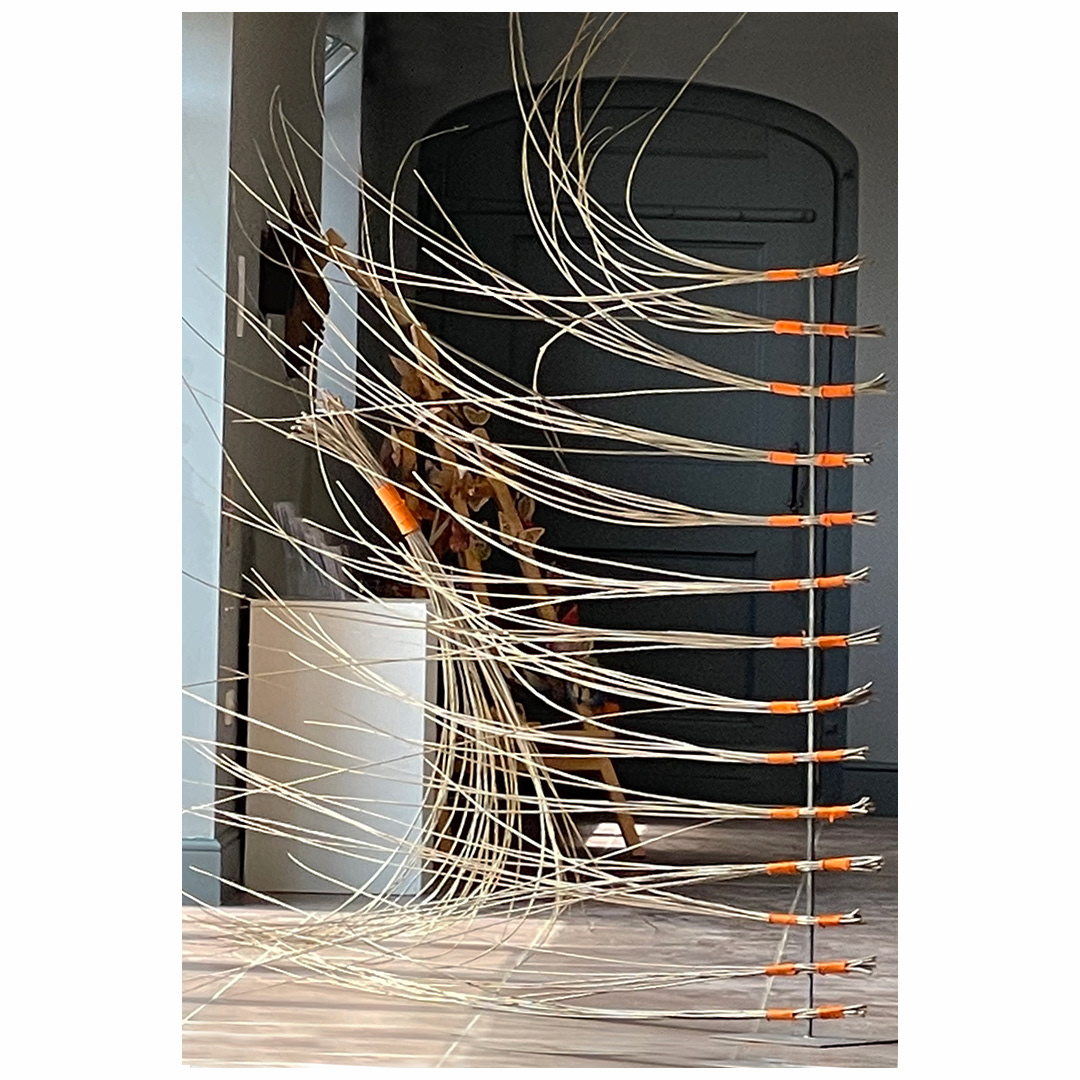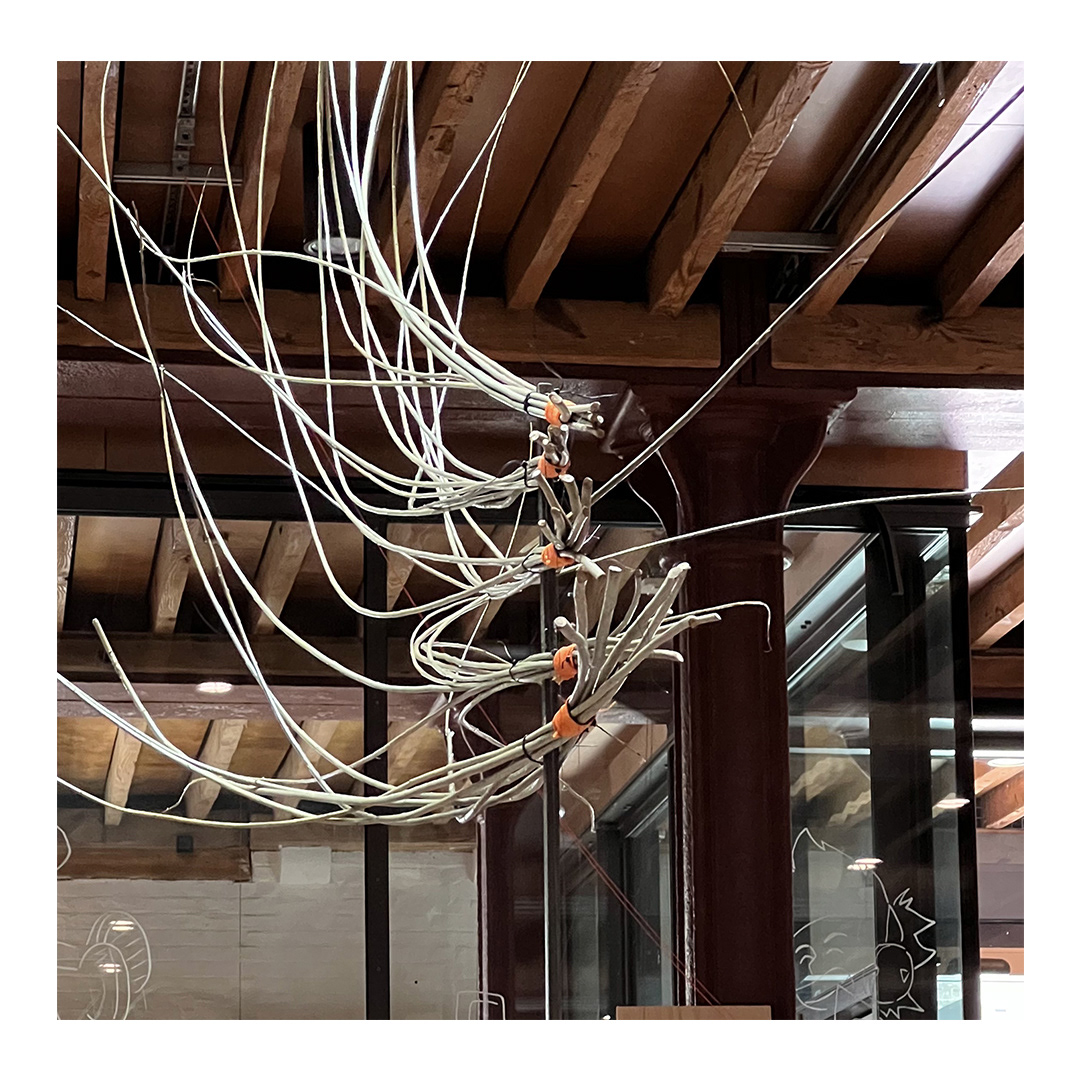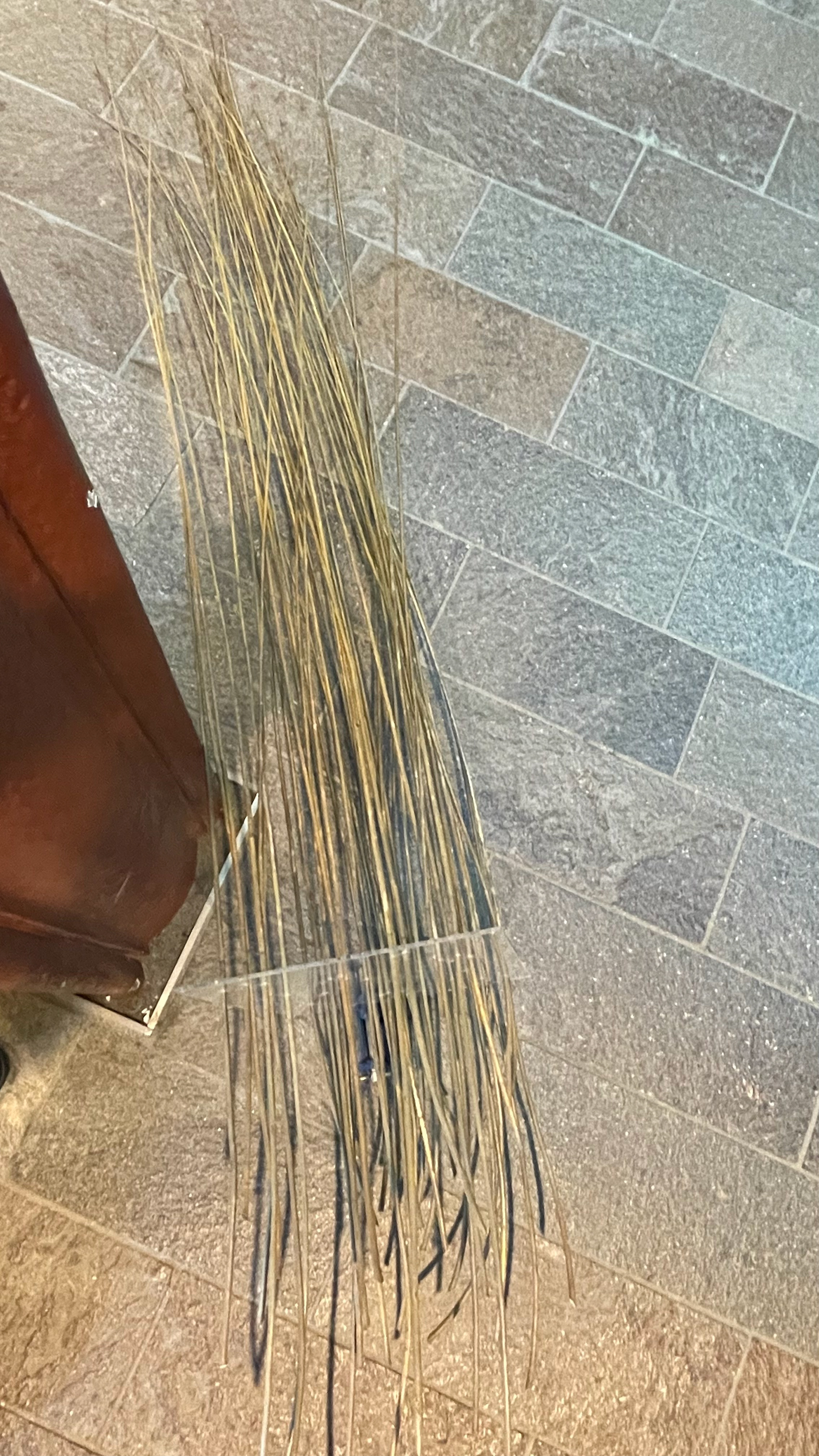Waiting for the King Tide
2020
Like Sounds of the Outmarsh, Waiting for the King Tide is an ‘on-the-point-of-collapse’ event which relies on the interconnectedness of its materials, site, and viewers’ amended behaviour to exist and function. Viewers’ behaviour quickly changes to take account of the work's fragility and precarity and the possibility of damage.
What comes to matter in this work is mutuality.
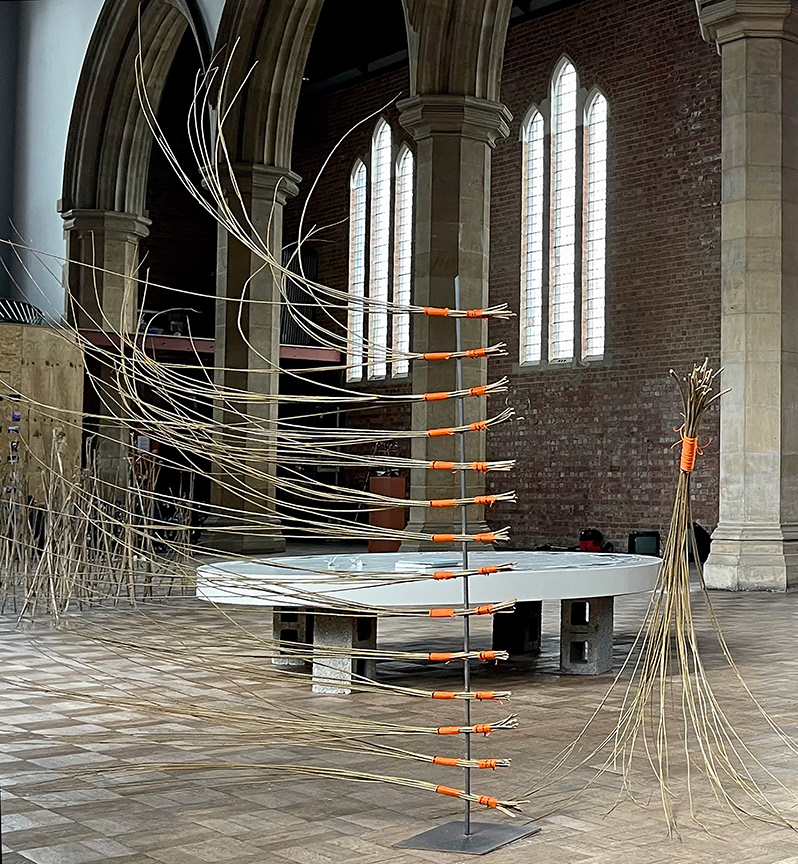
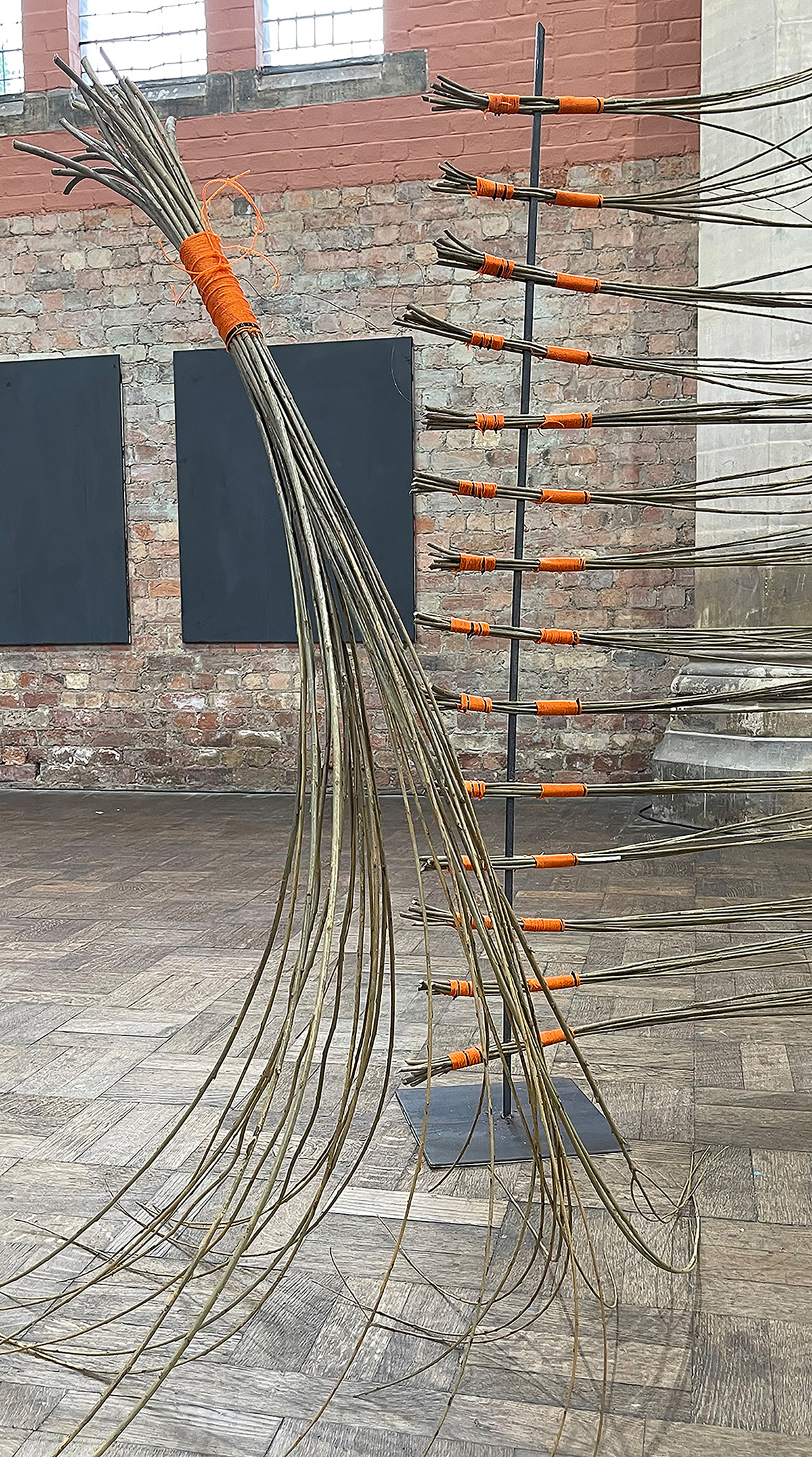
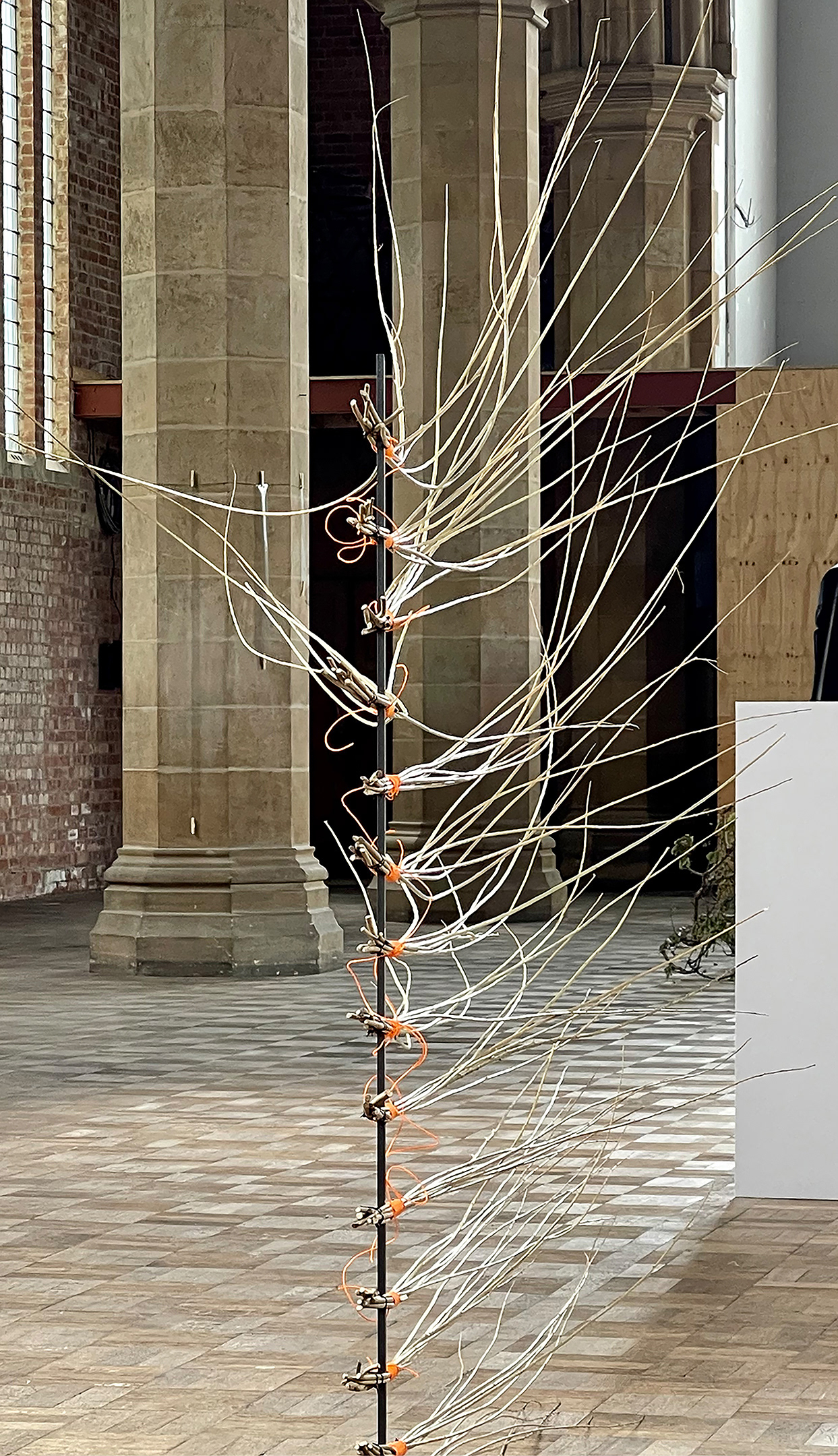
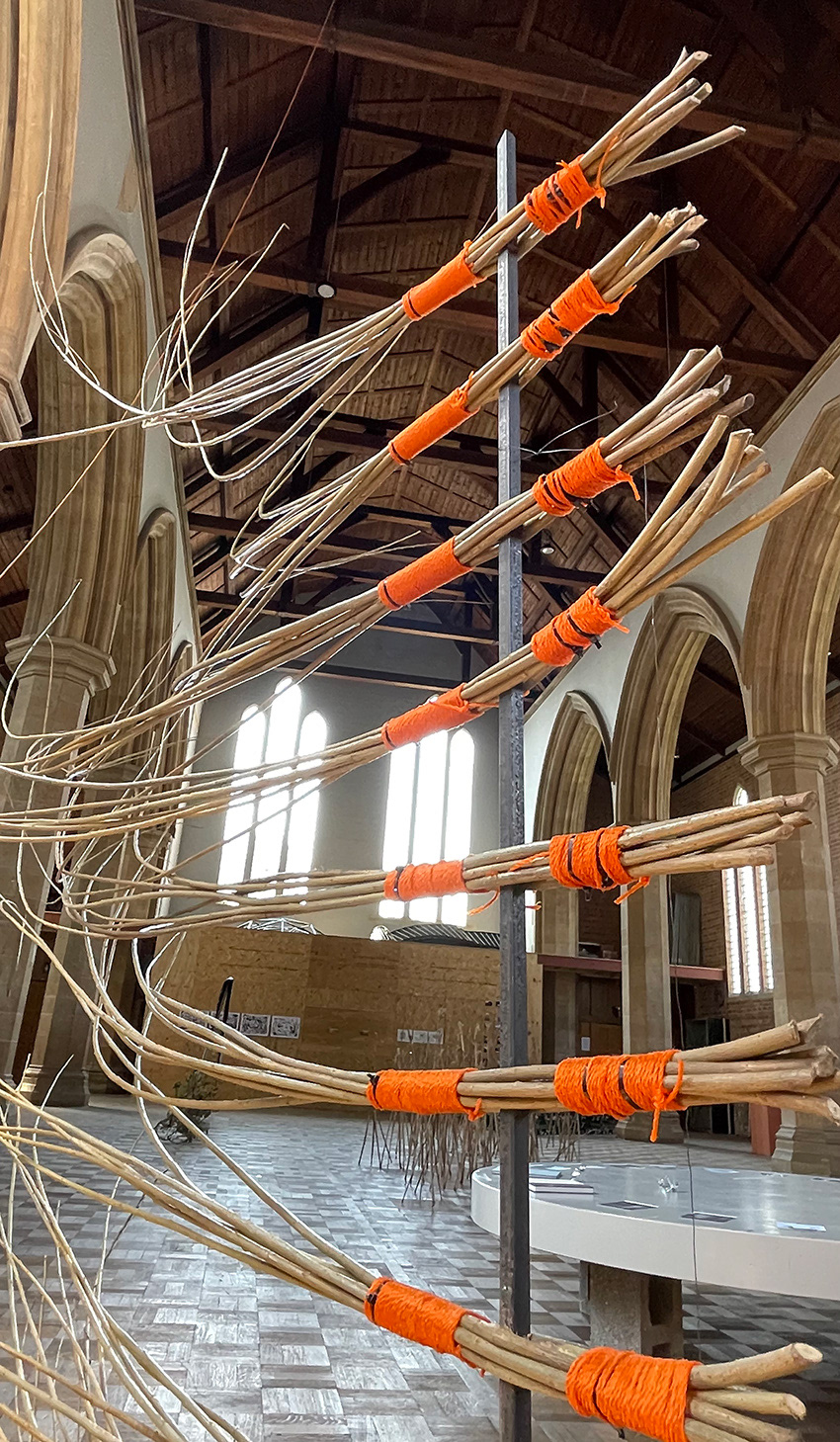
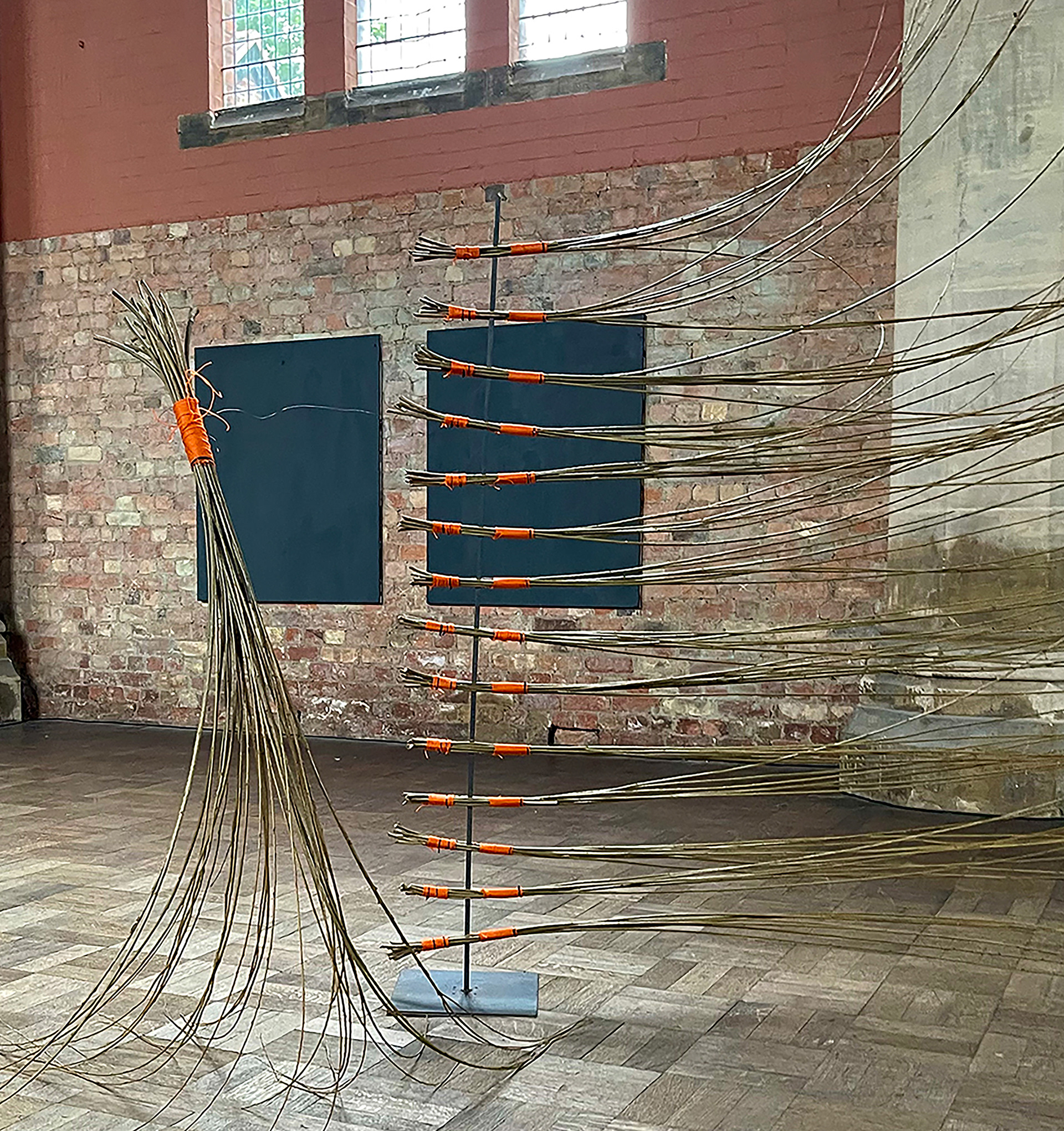
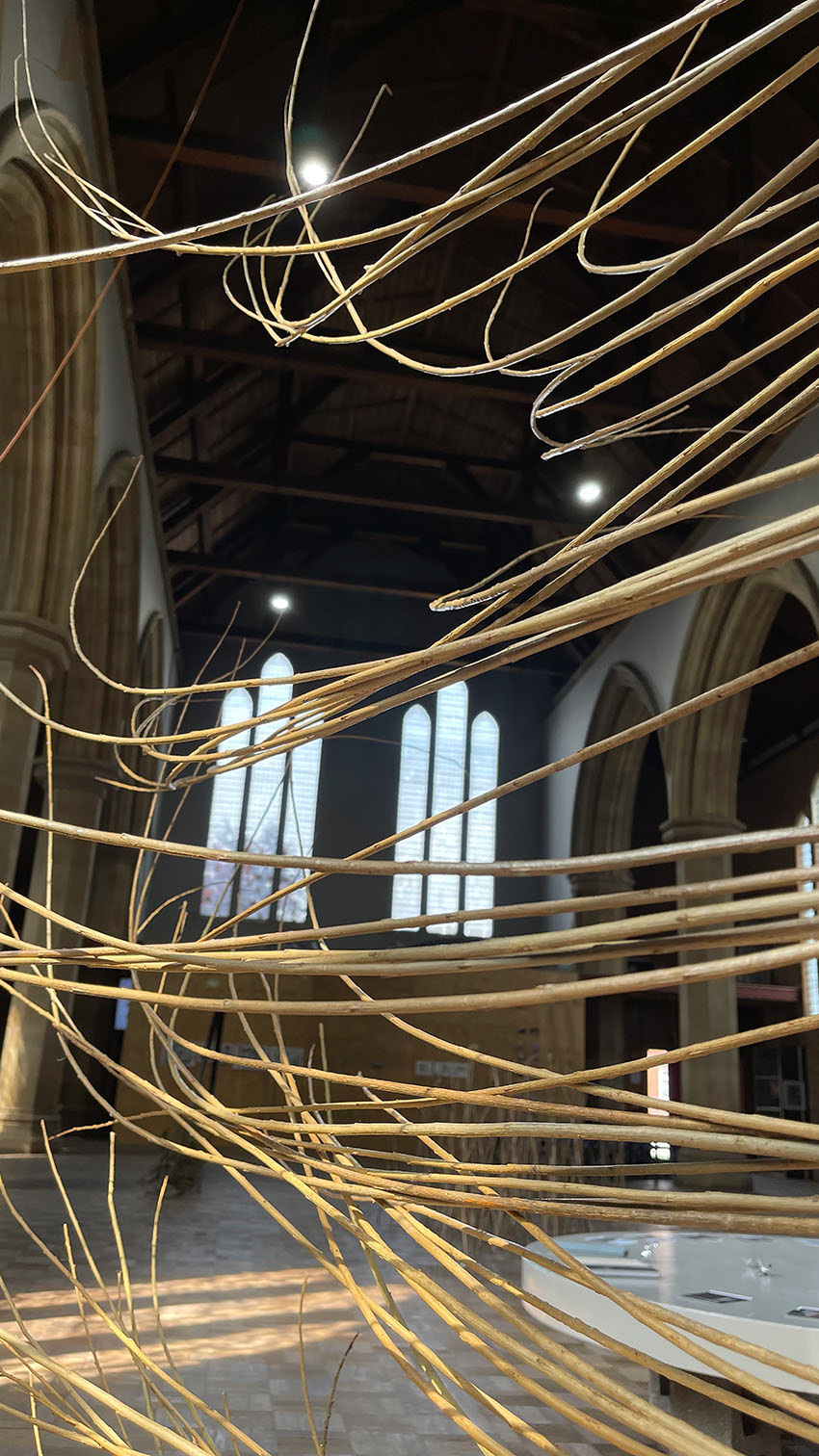
The single willow rods in this work, gathered from the coastal marshlands of Lincolnshire, are bound together with a ‘life-boat-orange’ builders’ line. They are tightly anchored to the metal rod (or rather held in place by forces of compression and tension) to achieve a temporary balance. I want to communicate something of the understanding that all matter, human and non-human, needs to be resolutely tethered to survive the constant friction and drag of the ebb and flow of the twice-daily tides of the sea.
The top-heavy form of this work is extremely unstable. It is supported precariously by the thin and delicate lower parts of the single willow rods. I particularly enjoy the tension of opposite forces working together to create a temporary state of equilibrium. This, as well as a ‘palpable precarity’ contributes to the work’s sense of movement and change. In their singular form the willow rods are flexible and easily breakable but together, united, they become tougher, and resilient – impossible to bend or snap.
The accidental drawings created by the liveliness of the willow successfully carry the eye above and beyond the human scale to trigger new connections between the work, the building, and the viewer. Their lightness and triviality and even their delicacy are the very things that give them worth. In their compelling and vibrant reach, I discover a renewed awareness that gravity’s irresistible pull on all things affects and connects humans and non-humans without prejudice.
Heightened by the building’s vast stillness and silence, the more-than-human remains engaging, timeless, and as uncanny as ever.


